Modelling… The passion which inspires us to build models takes its strength from a variety of sources. For many active model-builders, the prime factor are happy reminiscences from childhood – memories of a form of entertainment from before the electronic games age. Something drove us to take up this hobby. For whatever reason it appeared to be natural, interesting, and engrossing. What inspired you to start building models?
I myself was drawn in by the stories told by my parents and grandparents, people who remembered the war, and I supplemented these tales with a ton of films and books from the period. But this was not enough, I wanted something more. My friends and I avidly read through aviation journals, looking for information about military aircraft. To us, the colour profiles published in “Skrzydlata Polska” and “Letectvi a Kosmonautika” were a revelation. Many times while building a model we had not the slightest understanding of the aeroplane that it depicted. Somehow, however, we started improving our knowledge. Before the first Squadron monographs became available on the Polish market, followed by other, more ambitious periodicals, and before the appearance of internationally recognized native publications, our basic source of knowledge were the “Typy Broni i Uzbrojenia” (TBiU, “Arms and Equipment Types”), which were patterned after the English Profile Publications.
My favourite “TBiU” was number 69, titled “Samolot myśliwski Mustang Mk. I-III”, which was written by Michał M. Mietelski. I personally consider this booklet to be the deepest source of inspiration for Arma Hobby’s most recent kit. It was published exactly 40 years ago, in 1981. I remember getting a copy as a teen and then reading it many times over. Truth be told, I did not understand most of the text, as the technical descriptions were too difficult for me, while the fighter’s combat history was presented perfunctorily. But what really worked on my imagination were the 20 colour profiles and one centrefold with two Mustangs: a Mk I from No. 309 Squadron and a Mk III from No. 316 Squadron.
I wanted to have my own Mustang Mk III! But in the 1980s, which were a time of great shortages in Poland, there was simply nowhere to get one from. I tried to hack the system, so to speak, and make a silhouette model, impressing projections from the centrefold of “TBiU” No. 69 onto paper, however the exercise ended in failure. I finally saw a model of this version of the aircraft – an occasional Hasegawa kit in RAF livery – in the Pelta bookshop in the 1990s. It remained on the shelf for quite some time, but the price meant that it was out of reach of my student’s budget. I built a Matchbox P-51D and adorned it with transfers taken from a Farmtex vacu model. Today, my replica is an example of naive vintage model-making, however I remember it as a source of great joy in my younger years. My next Mustang was an Italeri kit, also on a scale of 1/72, with a scratch-built camera system located in a window behind the pilot. But Accurate Miniatures’ A-36 Apache on a scale of 1/48 proved too much for me… engrossed in building the model, I made an error in the wing geometry and completely lost my creative spark. I passed over Revell’s and Academy’s 1/72 kits. I was probably wanting too much from these models, and I simply thought that they would not meet my expectations. So much for my adventures with the Mustang.
English translation by Maciek Zakrzewski
See also:
- P-51 B/C Mustang™ models available in Arma Hobby webstore link
Instrukcja montażu modelu #70038 P-51 B/C Mustang™ Expert Set
Wszystko co chcecie wiedzieć o Mustangu z Arma Hobby i nie boicie się pytać
This post is also available in:  polski
polski


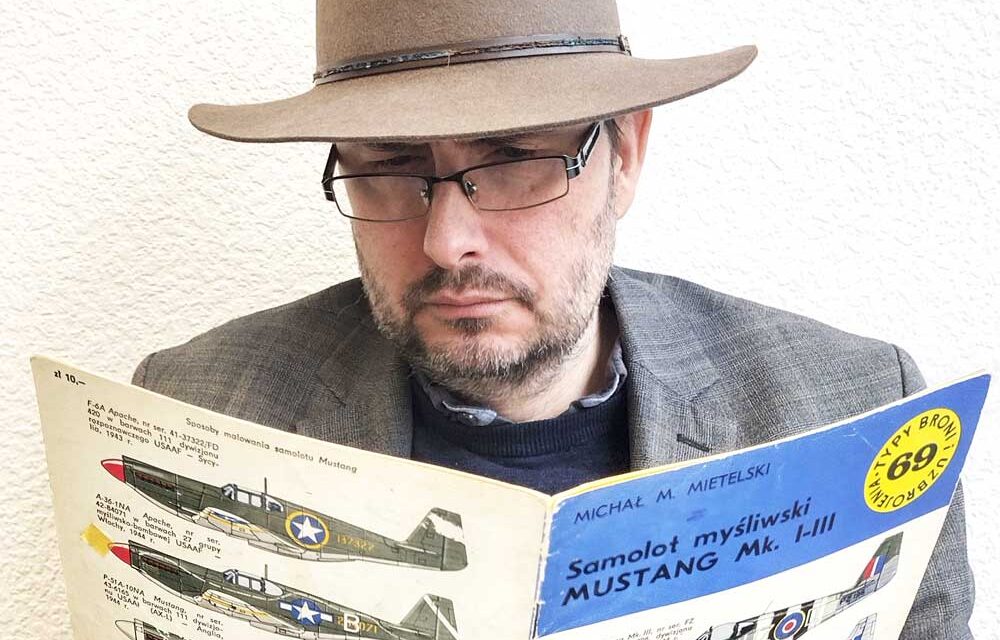
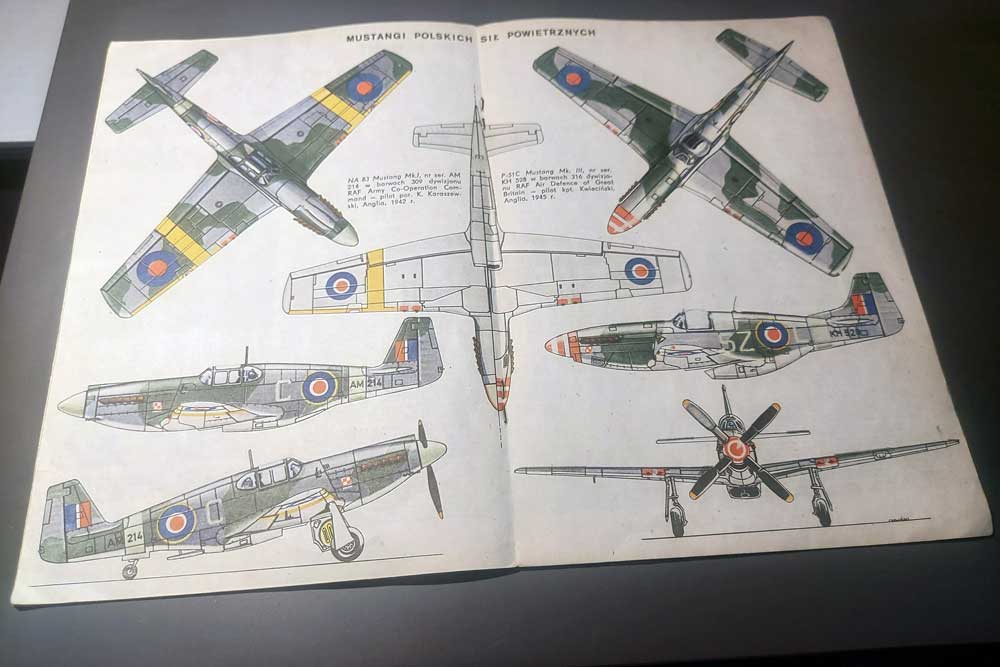
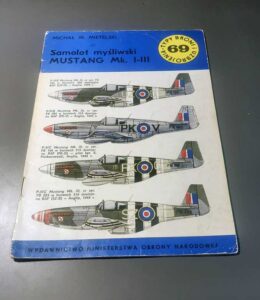
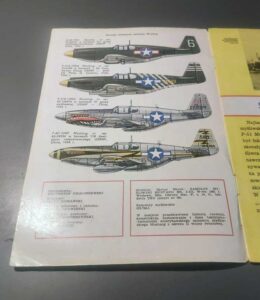

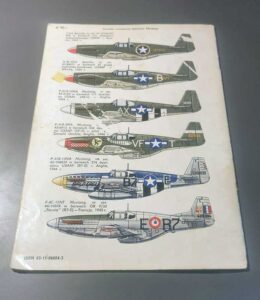

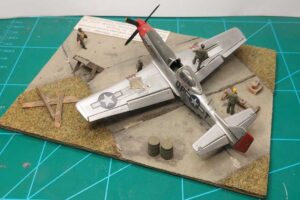
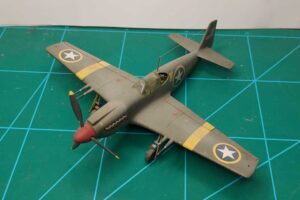





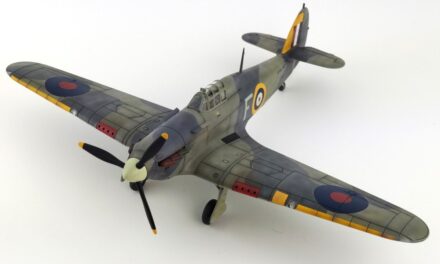
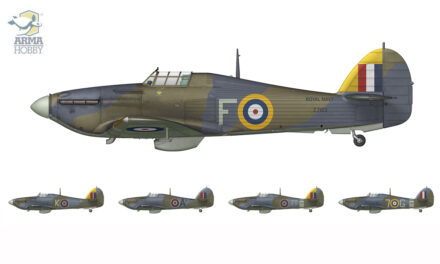
Unfortunately, I did not have the “TBiU” about the P-51. My first Mustang was a very decent Mk III vacuform produced by a Polish company, JMK, which I built together with my father, who was an enthusiastic modeller and whom I always considered an authority on these matters. He filled the one-piece propellers, which were empty inside, with Distal glue. We coloured the model with “modelling paints” that were manufactured in 8 colours by some artisan; they smelled terribly but covered well. Obviously, we used a brush, and the paint scheme chosen was that of Horbaczewski’s PK-G. Next, my father and I built another vacuform made in Communist Poland, a Farmtex P-51D, which was of lower quality than the JMK kit. This one received an American silver finish. My father had trouble building according to the instruction, and so the model ended up with extended flaps, an open cockpit… and an open engine cowling. We made the engine itself from a piece of eraser cut off with a razor blade and wrapped in some beautifully embossed tinfoil which we then painted black and carefully matted down. The choice of paint scheme, although rather striking (silver with red, straight from the… Read more »
I used Farmtex P-51D to upgrade Matchbox kit. I used seat and controls panel.